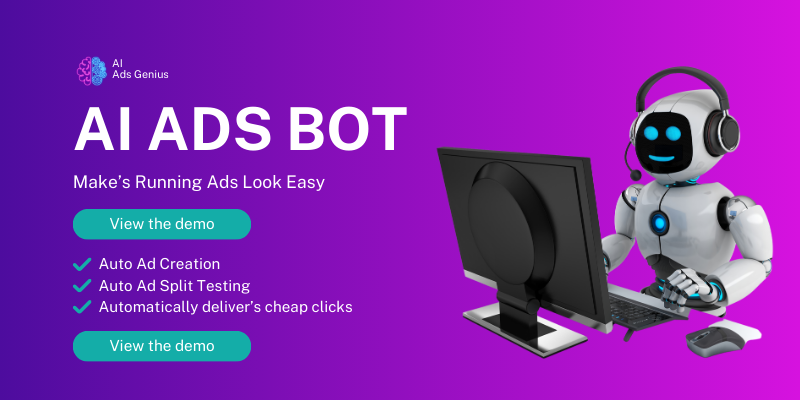Understanding Retargeting Ads
What Are Retargeting Ads?
Retargeting ads are those clever little ads that follow you around the internet after you visit a website. If you’ve ever browsed for shoes, and then suddenly see those shoes everywhere on your social feed, you’ve experienced retargeting! It’s a way for brands to remind you of what you looked at, bringing back those warm fuzzies and hopefully nudging you to buy.
From my experience, this type of advertising falls under a more personalized strategy. Rather than casting a wide net, retargeting ensures that you’re only showing ads to people who have shown interest in your products or services. It’s like saying, “Hey, I know you were checking this out. Need a little reminder?”
It’s crucial to understand the psychology behind it. When you see ads that align with your interests, the chances of returning to make a purchase increase significantly. It’s all about keeping your brand top of mind and, honestly, it works pretty darn well!
Setting Up Your Facebook Pixel
What is the Facebook Pixel?
The Facebook Pixel is essentially your magical tool for retargeting on Facebook. It’s a snippet of code that you add to your website, and it tracks visitors’ actions. Yes, it’s a bit of techy stuff, but bear with me! The Pixel collects data that helps you follow visitors as they navigate through your pages.
Once you’ve installed the Pixel, it creates a specific pool of visitors that you can market to later. You can either target those who interacted with your site or went as far as adding items to their cart but didn’t complete the purchase. Talk about a second chance!
Setting it up can feel overwhelming, but it’s well worth the effort. I remember the first time I installed it—it was a learning curve, but now I can’t imagine running campaigns without it. It’s like my safety net for making sure I’m reaching out to the right folks.
Creating Custom Audiences
Segmenting Your Audience
Once you have your Facebook Pixel up and running, the fun part begins—creating custom audiences! This allows you to group visitors based on their behavior on your site. There are endless options for how you can segment your audience, whether by pages viewed, time spent, or actions taken.
For instance, if someone visited your product page but didn’t make a purchase, you can create a specific ad just for them. It’s like sending a friendly reminder. In my campaigns, targeting ‘almost buyers’ has been one of the most effective strategies for boosting sales.
Every audience segment gives you more precise control over your messaging. Just think about how much more engaging your ads can be when you tailor them specifically to each group’s interests. It feels more personal, and customers appreciate that little extra effort.
Designing Effective Ads
Grabbing Attention with Creatives
Now that you have your audiences, it’s time to craft some eye-catching ads! The design of your ad is critical because in a fast-scrolling world, you’ve got mere seconds to grab attention. I always suggest using vibrant colors, bold fonts, and images that pop. This is your moment to shine!
Don’t forget the copy! Keep it catchy and to the point. Pose a question, use a compelling call to action, or throw in a special promotion. The goal is to entice and spark curiosity. I can’t tell you how many times I’ve seen a cleverly worded ad make all the difference!
Remember, testing different ad formats is essential. Try out videos, carousels, or even simple image ads to see what resonates best with your audience. I’ve tried a few formats, and you’ll be surprised at what works best. Sometimes, it’s the simplest ads that grab the most attention!
Analyzing Performance and Optimizing
Looking at the Data
After you’ve set your retargeting ads in motion, the next step is to monitor their performance. The beauty of digital marketing is the ability to track everything, and Facebook offers robust analytics tools to do just that. Take a good look at clicks, conversions, and engagement rates.
From my own experience, I’ve found that not everything will work perfectly the first time. This is where you get to test, learn, and refine your approach. If something isn’t performing as expected, change ad designs or alter your audience target until you hit gold!
What’s crucial is remaining agile. Marketing is a constantly changing landscape, and what worked yesterday might not work today. Regularly analyzing your data helps you stay ahead and optimize your campaigns for even better results.
FAQ Section
What are retargeting ads?
Retargeting ads are promotional messages displayed to users who have previously visited a brand’s website, reminding them of their interest and encouraging them to return to complete a purchase.
How do I set up a Facebook Pixel?
You can set up a Facebook Pixel through your Facebook Ads Manager. You’ll get a piece of code that you can install on your website to track visitor activity and build audiences.
How do I create custom audiences?
After installing the Facebook Pixel, you can create custom audiences based on specific actions that users take on your website, such as visiting certain pages or adding items to their cart.
What types of ads should I create?
Your ads should be eye-catching with attention-grabbing creatives. Depending on your audience’s behavior, you can test images, videos, or carousel ads to see which performs best.
How can I analyze the performance of my ads?
You can analyze your ads using Facebook’s robust analytics tools, which provide insights into clicks, conversions, and engagement. Regular monitoring helps you optimize your strategy for better results.

